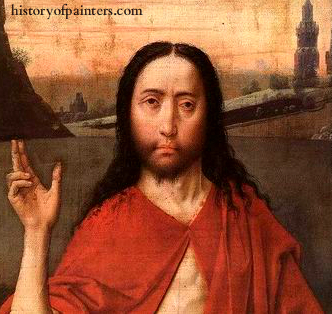Search:: Artists Alphabetically Artists by Country Artists by Century Artists by Movement
Dieric Bouts the Elder
1413-1475
Netherlandish Painter of the Northern Renaissance
Stylistically influenced by the following painters - Rogier van der Weyden, Jan van Eyck
Education - He was apprenticed to the workshop of Rogier van der Weyden

Dieric Bouts Bio
Dieric Bouts lived during tumultuous and shifting times. The world was in transition. The old fuedal system imposed by the Church was collapsing under the development of cities, the rise of the merchant class, invention of the printing press and the spread of religious reform. People were becoming educated in science, political affairs and art. Dieric Bouts was born at the beginning of the modern world. His early training was in the workshop of Rogier van der Weyden, the greatest painter in Northern Europe at that time. Dieric Bouts absorbed the Netherlandish artistic traditions and influence, reinterpreting them in new original ways. After his assistantship with van der Weyden he established his own studio i became the official painter of the town of Louvain. He painted a range of subjects, excelling in portraiture and dramatic Biblical themes. Bouts style is characterized by expressive, controlled colors and harmonious union between figure and landscape.
The Northern Renaissance versus Italian Renaissance
Many of the early paintings of the Northern Renaissance perished through time and the fierceness with which the Iconoclastic battles were waged. The Northern Renaissance was different from the Italian Renaissance in many ways. Painters of the North focused upon secular society rather than the Church and overblown religious themes. Northern Renaissance painters emphasis the daily life of the merchant and peasant class. They also put a greater emphasis on spirituality, piousness and living a simple life. Artists such as Dieric Bouts and Peter Brugal the Elder painted inspirational biblical scenes, the merchant class at work, idyllic scenes of peasants working at everyday tasks, playing games and feasting.Northern Renaissance painters seemed more in touch with the people. According to art historian John C. Van Dyke "They were perhaps less versatile, less volatile, less like the French and more like the Germans. Fond of homely joys and the quiet peace of town and domestic life, the Dutch were matter-of-fact in all things, sturdy, honest, coarse at times, sufficient unto themselves, and caring little for what other people did. Just so with their painters. They were realistic at times to grotesqueness. Little troubled with fine poetic frenzies they painted their own lives in street, town-hall, tavern, and kitchen, conscious that it was good because true to themselves.."
The Italian Renaissance, on the other hand, focused more on the aristocracy and the theocracy. Painters highlighted the individual and glorified worldly pleasures, Paintings were sumptuous, elaborate, expressive, and exhalted wealthy and powerful people. The Italian Renaissance painters focused heavily on religion, Roman Catholicism. Popes and church hierarchy were wealthy, powerful rulers. Like kings they were depicted in elaborate settings swaddled in furs and silks.
Important Words, People, Phrases, Chactoristics related to the Renaissance Art Movement - allegorical, Gospel parables, rebirth, 1 point perspective, Hieronymus Bosch, Limbourg Brothers, Roger Campin, Jan Van Eyck, Jean Fouquet, formation of a merchant class, glazing, impasto, scriptorium, illuminator, invention of the printing press, woodcuts, engravings, Antwerp, commerce, Northern Europe, Bruges, mythological scenes, genre painting, landscapes, portraits, moralizing overtones, human vices, lust, Protestant Reformation, paradise, spirituality, piousness, living a simple life, reform, Human Reasoning, merchant class at work, idyllic scenes of peasants, playing games, feasting, linear perspective, Heliocentric Theory, spiritually significant, illuminated manuscript, idealized biblical themes, scriptorium, emotion, illuminator, iconoclast, Age of Discovery, Virgin and Child, axonometric drawing, curiosity about the natural world, realistic use of colours and light, Bonfire of the Vanities, Old Testament stories, Gospel parables, The Blackdeath, Christian symbolism.
Require
more facts and information about Remarkable
Religious Renaissance Paintings and Art history? Dig around every nook and
cranny of the known universe for information this subject. Search
Here
☼☼☼☼☼
© HistoryofPainters.com If you like this page and wish to share it, you are welcome to link to it, with our thanks. updated 3/7/2017